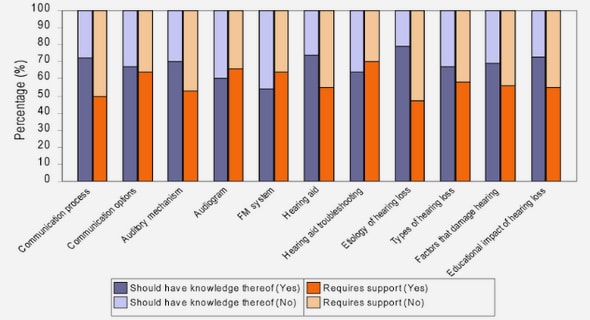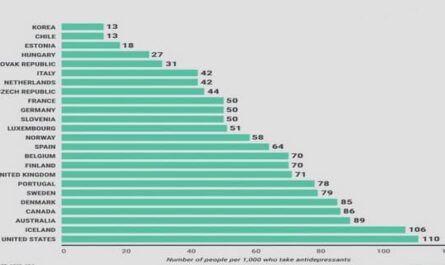Get Complete Project Material File(s) Now! »
Constituents of milk
Water
Water is the principal component of most dairy products. It varies from 2.5 to 94% (w/w) according to the product. In addition to pH and temperature, water plays a key role in food technology since it can impact directly the texture of the products and therefore their utilization. It is considered an essential diluent in foodstuffs, since it can modify the chemical, physical and microbiological aspects of the final product [23].
Proteins
Milk and most of dairy product properties are influenced by their proteins content more than any other constituent. According to their properties, proteins are considered nowadays as one of the best characterized food systems. Research on milk proteins started since the early nineteenth century. Innovative work was accounted first by Schubler on the milk proteins and by Braconnot who was in charge of the appropriation of the word ‘casein’ in 1830. Bovine milk contains generally 2.5 to 3.5% of proteins. This amount depends on the breed, the individual variation of the animal, and to a lesser extent, on the stage of lactation, the nutritional status and the health of the animal [23,24]. Milk is considered as a good source of essential amino acids. In addition, it contains a wide array of proteins with biological activities, ranging from antimicrobial ones to those facilitating absorption of nutrients, as well as those acting as growth factors, hormones, enzymes, antibodies and immune stimulants [25,26].
Milk proteins are made out of whey proteins (20%) and caseins (80%). Caseins are recognized to convey phosphate and calcium, having numerous bioactive functions and contributing to proficient digestion [25]. Whey proteins have an assortment of dietetic and biological properties and consequently are extensively utilized in decreasing the possibility of diseases such as inflammation [27-28], cancer [29], human immune efficiency virus infection [30] and chronic stress-induced disease [31].
Casein
Caseins are defined as the milk fraction that precipitate by acidification to pH 4.6 at 20°C. Casein consists of four families: αS1-casein (αS1-cn), αS2-casein (αS2-cn), β-casein (β-cn) and κ-casein (κ-cn) representing 40%, 10%, 38%, 12%, of the total casein, respectively [32]. Caseins are characterized by different numbers of phosphorylated serine residues, which give them different properties [33]. αS1-cn and β-cn do not contain any disulphide bonds however, αS2 and κ-casein own two. Due to their opened structure, caseins have a high surface hydrophobicity. This results in a fragile secondary structure and irregular coiling of the primary chain. Caseins are heat resistant due to their weak secondary and tertiary structures. This open structure similarly makes caseins sensitive against proteolysis within different enzymes, particularly pepsin [34].
The phosphate groups are situated in clusters bound to serine residues. Because of their negative charges, the phosphate groups have the capacity to bind ions, particularly Ca2+. This ions binding is important in the transportation of phosphate and calcium to the neonate. Caseins are delicate to the variation in the calcium level of milk, and their precipitation can be induced when the calcium level is increased. The most sensitive type of calcium casein is the αS2-cn, however κ-casein got the least amount of phosphate groups and is not influenced by the calcium concentration present in milk [35].
In order to stabilize their structure, caseins tend to connect to each other’s, through hydrogen bonds, to form casein micelles with an average diameter of 200 nm. Almost 95% of the casein are consequently bounded in casein micelles. These micelles consist of 94% proteins, while the rest of the 6% are denoted as colloidal calcium phosphate that comprises phosphate, calcium, little amounts of magnesium, citrate and other components [36]. Different models have been established in order to clarify the structure of casein micelle, such as the nanocluster model displayed by Holt and Horne [37] and the sub-micelle displayed by Walstra [38]. Until this moment, none of the models are totally checked. It is then known that the core of the casein micelle is the location of the most hydrophobic and calcium sensitive caseins, α-cn and β-cn, while the surface with its polar C-terminal outside the micelle core is the location of the most hydrophilic and calcium insensitive κ-cn which makes the casein soluble.
Whey Protein
Whey proteins or serum proteins constitute around 20% of the overall proteins of bovine milk. Whey or milk serum, defined as the remaining soluble fraction after casein precipitation at pH 4.6, comprises four main protein categories, namely β-lactoglobulin (β-Lg), bovine serum albumin (BSA), α-lactalbumin (α-La), and immunoglobulins [39]. whey proteins in general and α-La in particular, have high nutritional value, which leads to the fact that whey proteins derivatives are widely used in food industries. In bovine milk, almost 50% and 12% of whey proteins are represented by β-Lg and α-La respectively. Whey proteins are highly structured proteins with stable secondary and tertiary structures. Hydrophobic interactions, disulphide bonds, ion-pair interactions hydrogen bonding, and van der Waal’s interactions are the major forces responsible for sustaining their globular structure [40]. Whey proteins are highly soluble in milk over a wide range of pH due to their native composition and to the huge amount of hydrophilic buildups on the surface of the globular structure and the high quantity of disulphide bonds [41]. The proteins are then resistant to proteolysis due to their globular structure.
Fat
Milk is an emulsion where fat, which represents around 3 to 5%, is presented as small globules or droplets dispersed in the aqueous phase of the milk [42]. Their diameters vary from 0.1 to 20 µm. The stability of this emulsion is assured by a thin membrane called milk fat globule membrane (MFGM), which has an important role controlling the communication between the fat globule and the surrounding milk [43]. Triglycerides are the principal components of the milk fat. Moreover, we can find di- and monoglycerides, fatty acids, sterols, carotenoids, which give the yellow colour to the milk, in addition to the vitamins (A, D, E, and K), and all the other trace elements [44]. Milk fat globule membrane is composed of phospholipids, lipoproteins, cerebrosides, proteins, nucleic acids, enzymes, trace elements (metals) and bound water. The structure of this membrane is not fixed; however, it is dynamic due to the continuous exchange with the surrounding media; therefore, the thickness of this membrane varies from 5 till 10 nm. Due to their size and their low density, fat globule will migrate to the surface after a certain time if milk was left without any intervention [45]. Pasteurization has a slight effect on lipid composition and content. On the other hand, homogenization is a process that increases the number of lipid globules at least 100-fold and the surface area about 6 to 10 times, diminishes their diameter from around 3 to 0.8 µm and modifies the globule membrane composition and structure. The globule surface is mostly but not totally recoated with caseins.
Minerals
Table 2 shows the concentration range (expressed in mass and molar concentrations) of different minerals in cow milk. This composition is considered as generally steady yet slight deviations can be observed at different times. Thus, milk could be considered rich in proteins, containing high content of phosphate and calcium. Minerals concentration varies according to the lactation time period. The most significant variations in the composition occur at around parturition; in this manner the concentration of the calcium in colostrum is much higher than that of normal milk and close to the end of lactation [46].
Calcium
Milk is a major source of calcium for human consumption. The colloidal phase contains 66% of the total calcium present as calcium phosphate while, the remaining calcium is present in the soluble phase [46]. Ionic calcium represents around 10% of total calcium [47]. At pH 5.2, inorganic calcium phosphate is completely destroyed, therefore all inorganic phosphate will be solubilized. The complete solubilization of calcium occurs at pH 3.5. A significant role on the kinetics of protein denaturation was shown when the amount of calcium increased. In fact, the unfolding and aggregation stages of β-lactoglobulin and α-La were affected with the increase in Ca2+concentration [48]. When there is an excess of calcium ions, the protein denaturation occurs at lower temperature than in standard case. Before heat treatment, the addition of CaCl2 to skim milk provided a noticeable rise in the rates of whey proteins denaturation, apart from the immunoglobulins [49]. In order to understand the influence of increasing Ca2+ concentration on denaturation of whey proteins in milk, studies have been carried out. In 1984, Bernal and Jelen [50] demonstrated that when calcium ions are bounded to α-La, heat stability of this last is increased by promoting renaturation on cooling. Nevertheless, Li et al., [51] showed that Ca2+ stabilized the unfolded development of lactoglobulin and, consequently, advanced its denaturation.
Lactose
Lactose belongs to the group of organic chemical compounds called carbohydrates. Lactose is a disaccharide of glucose and galactose, and can be found only in milk [52]. Its hydrolysis occurs in the intestinal mucosal cells. In milk, lactose content varies from 4.5 to 5.5% [53]. Lactose is water soluble and has a low sweetness capacity evaluated as 16 comparing to that of sucrose estimated as 100 [52]. It plays a key role in fermentation process by impacting the amount of lactic acid produced during milk products fermentation. Human lactose intolerance arises from their incapacity to hydrolyse lactose due to the absence of lactase. This enzyme deficit is common in eastern Asia and African countries [54]. Lactose is the principal component of milk powder. It creates an impact matrix for the dispersion of fat and proteins. Lactose has a primordial role, with the participation of proteins, in emulsion stability. Maillard reaction, discussed here after, which involves the ε-amino group of lysine and the carbonyl function of a reducing sugar (lactose) is the main reason along with fat oxidation behind the flavour, solubility and colour alteration during the storage of milk [55].
Heat treatment of milk
Milk stability is assured by the physiochemical properties of its components and by the equilibria resulted from the interactions between salts, proteins and fat. These equilibria are highly temperature-dependent. In the following chapter, the effect of heat treatment on pH, mineral balance, protein denaturation and the interactions between proteins and fat are studied.
Heat-induced changes in milk pH and mineral balance in milk
Ma and Barbano [56] demonstrated that upon heating milk at temperatures up to 80°C, the pH decreases from 6.8 to 6.2. In 1981, Fox [57] noted that milk may be heated for more than 3 hours at 140°C without any coagulation if the pH was adjusted continuously. According to Van Boekel [55], heat-induced acidification of milk is due to: 1) formation of organic acids and mostly formic acid, 2) insolubility of tertiary calcium phosphate and 3) casein’s dephosphorylation. The continuous decrease in milk pH is due to the formation of organic acids, arising from the lactose degradation. Berg and Van-Boekel [58] noted that the formation of formic acids occurs through two ways. Lactose degradation is responsible of 80% and the rest is obtained as a result of Maillard reaction upon heating the milk at 110–150°C. The isomerization/degradation path is defined by the transformation of lactose to lactulose via the Lobry de Bruin-Alberda van Eckenstein transformation, then into galactose and other C5 and C6 compounds. The other 20% of formic acids are obtained upon the degradation of lactulosyllysine; an Amadori product obtained through the interactions of lactose with ε-amino group of lysine. Concerning the heat-induced dephosphorylation of casein, we distinguished two cases: the heat induced dephosphorylation of sodium caseinate and calcium caseinate. Belec and Jenness [59] have demonstrated that 50% of the sodium caseinate dephosphorylation occurs within the first hour of heating at 120°C, however less than 80% of dephosphorylation occurs after 5h at 120°C.
Heat-induced dissociation of caseins
κ-casein has a primary role in maintaining the integrity of casein micelle. In addition to other factors, its dissociation contributes to the heat induced coagulation of milk. Singh and Fox [59– 63] have demonstrated its role during the heat stability phenomenon. In fact, the dissociation of κ-casein from micelle leaves this latter in a depleted way, more sensitive to calcium binding and therefore to coagulate. In addition to the temperature, different factors have a big impact on the dissociation of κ-casein such as the amount of whey proteins, the minerals and the solid contents of milk. Concerning whey proteins, we distinguish two scenarios according to the pH. Below 6.7, the addition of β-Lg decreases the extent of heat-induced dissociation of κ-casein, while inversely at pH> 6.7, the heat-induced dissociation increases [64].
Heat-induced denaturation of whey proteins and casein- whey protein interactions
Due to their globular structure, whey proteins are thermolabile. While heating milk above 60°C, serum proteins unfold then denature (Figure 1). Denaturation of the major whey protein β-Lg involves two different phases. The first phase exposes the hydrophobic residues and disulphide bonds due to the unfolding of the native globular structure. At this moment, in case the heat treatment is interrupted or limited, the unfolded whey protein will refold. At high temperature, the unfolded whey protein can interact with other molecules such as caseins mostly via covalent and disulphide bonds and therefore it will lead to the formation of aggregates [39,65]. When heating milk at a temperature between 60 and 70°C, tertiary structure of the β-Lg will unfold, creating a sensitive monomer with free thiol group (Cysteine 121) and hydrophobic parts of the residues chain [66]. These monomers are able to interact with other monomers but also with caseins; therefore, forming protein aggregates [67].
Table of contents :
GENERAL INTRODUCTION
CHAPTER : I ARTICLE I- LITERATURE REVIEW
Introduction
Industrial versus indigenous technology
Indian Khoa
Serbian Kajmak
Constituents of milk
Water
Proteins
Casein
Whey Protein
Fat
Minerals
Calcium
Lactose
Heat treatment of milk
Heat-induced dissociation of caseins
Heat-induced denaturation of whey proteins and casein- whey protein interactions
Heat-induced protein- fat interactions and emulsion instability
Qishta, Khoa and Kajmak: overview, process and final product composition
Kajmak
Khoa
Conclusion
References
CHAPTER : II ARTICLE II – RESULTS
Introduction
Introduction
Materials and Methods
Materials
Qishta Preparation Procedure
Temperature Distribution
Physicochemical Analysis for Qishta
Static Light Scattering
SDS-PAGE Analysis
Milk Fat Effect
Statistical Analysis
Results and Discussion
Chemical Composition of Qishta
Temperature Distribution Profile
Emulsion Stability to Heat Treatment
Static Light Scattering (SLS)
Identification of Major Proteins in Qishta
Effect of Temperature on Milk Fats
Effect of Fat on Qishta Formation
Conclusions
References
CHAPTER : III ARTICLE III – RESULTS
Abstract
INTRODUCTION
Materials and Method
Material
SDS-PAGE Analysis
Sample preparation for quantification and cross-links analysis
Digestion of samples
LC-MS/MS Orbitrap eFASP
Quantification MaxQuant
Identification of cross-links
Microstructure characterization using confocal laser scanning microscope (CLSM)
Statistical analysis
Results and Discussion
Chemical composition of Qishta and UHT milk
Protein identification and quantification by mass spectrometry
Protein-Protein Interaction
Identification of S-S crosslinks in Qishta by SDS-PAGE
Identification of LAL and LAN present in milk and Qishta
Protein-Fat interaction
Milk characterization before and after heat treatment.
Milk characterization
References
CHAPTER : IV
Introduction
Abstract
Introduction
Materials and Methods
Production of Qishta
Physicochemical analysis
Extraction of fat
Measurement of acid value
Measurement of peroxide values
Measurement of thiobarbituric acid
Fluorescence spectroscopy measurements
Mathematical analyses of data
Results and discussion
Evolution of the physico-chemical parameters during aging
Evolution of acid value during Qishta aging
Evolution of primary oxidation products during Qishta aging
Evolution of secondary products during Qishta aging
Evolution of fluorescence spectra during Qishta aging
Fluorescence spectra of tryptophan acquired after excitation at 290 nm on Qishta samples during aging
Fluorescence properties of vitamin A acquired after emission at 410 nm on Qishta samples during aging
Fluorescence properties of riboflavin acquired after excitation at 380 nm on Qishta samples during aging
Discrimination based on fluorescence spectra recorded on Qishta samples
Evaluation of the discriminant ability of fluorescence spectra of tryptophan acquired after excitation wavelength set at 290 nm on Qishta samples during 20 days of storage.
Evaluation of the discriminant ability of fluorescence spectra acquired on Qishta excitation during storage after emission wavelength at 410 nm on Qishta
Evaluation of the discriminant ability Fluorescence spectra of riboflavin acquired after excitation at 380 nm on Qishta samples
Conclusion
References
CONCLUSION AND PERSPECTIVES
Conclusion and perspectives


